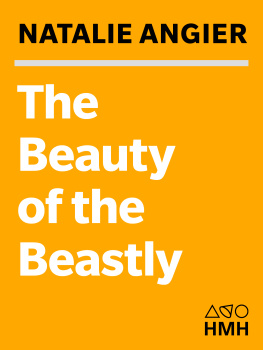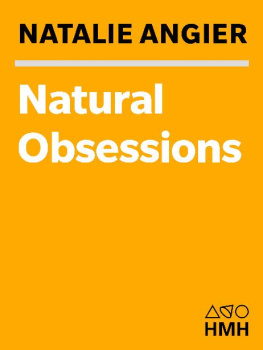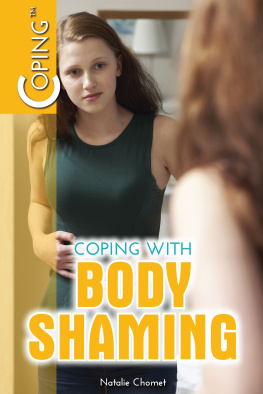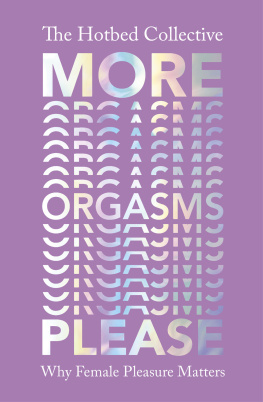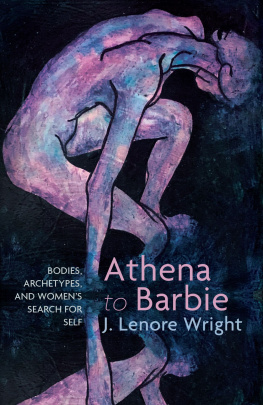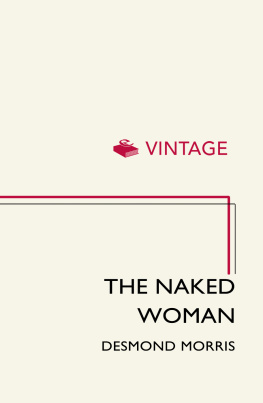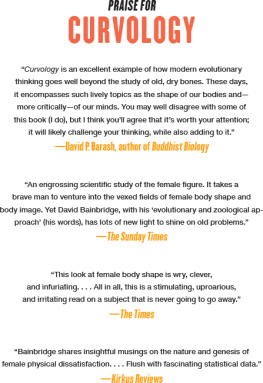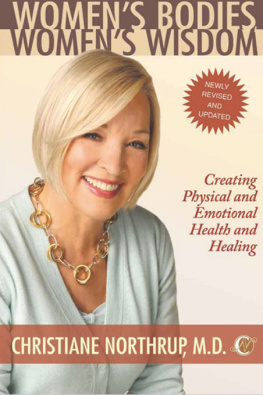ANCHOR BOOKS
A Division of Random House, Inc.
New York
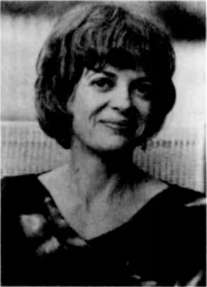
Natalie Angier
WOMAN
Natalie Angier writes about biology for The New York Times, where she has won a Pulitzer Prize, the American Association for the Advancement of Science journalism award, and other honors. The author of two previous books, The Beauty of the Beastly and Natural Obsessions, she lives with her family in Takoma Park, Maryland.
BOOKS BY NATALIE ANGIER
Natural Obsessions: Striving to Unlock
the Deepest Secrets of the Cancer Cell
The Beauty of the Beastly:
New Views of the Nature of Life
Woman: An Intimate Geography
First Anchor Books Edition, March 2000
Copyright 1999 by Natalie Angier
All rights reserved under International and Pan-American Copyright Conventions.
Published in the United States by Anchor Books, a division of
Random House, Inc., New York, and simultaneously in Canada by Random
House of Canada Limited, Toronto. Originally published in hardcover in the
United States by Houghton Mifflin in 1999. This edition published by arrangement
with Houghton Mifflin.
Anchor Books and colophon are registered trademarks of
Random House, Inc.
Library of Congress Cataloging-in-Publication Data
Angier, Natalie.
Woman : an intimate geography / Natalie Angier1st Anchor Books ed.
p. cm.
Originally published: Houghton Mifflin Co., 1999.
Includes bibliographical references and index.
ISBN 0-385-49841-1 (pbk.)
1. WomenPhysiology. 2. WomenPsychology.
3. Sex differences. I. Title.
QP38.A54 2000
612.6'2dc21 99-047764
www.anchorbooks.com
Printed in the United States of America
20 19 18 17 16 15
FOR KATHERINE IDA
CONTENTS
INTRODUCTION : Into the Light
1. UNSCRAMBLING THE EGG:
It Begins with One Perfect Solar Cell
2. THE MOSAIC IMAGINATION:
Understanding the "Female" Chromosome
3. DEFAULT LINE:
Is the Female Body a Passive Construct?
4. THE WELL-TEMPERED CLAVIER:
On the Evolution of the Clitoris
5. SUCKERS AND HORNS:
The Prodigal Uterus
6. MASS HYSTERIA:
Losing the Uterus
7. CIRCULAR REASONINGS:
The Story of the Breast
8. HOLY WATER:
Breast Milk
9. A GRAY AND YELLOW BASKET:
The Bounteous Ovary
10. GREASING THE WHEELS:
A Brief History of Hormones
11. VENUS IN FURS:
Estrogen and Desire
12. MINDFUL MENOPAUSE:
Can We Live Without Estrogen?
13. THERE'S NO PLACE LIKE NOTORIETY:
Mothers, Grandmothers, and Other Great
Dames
14. WOLF WHISTLES AND HYENA SMILES:
Testosterone and Women
15. SPIKING THE PUNCH:
In Defense of Female Aggression
16. CHEAP MEAT:
Learning to Make a Muscle
17. LABOR OF LOVE:
The Chemistry of Human Bondage
18. OF HOGGAMUS AND HOGWASH:
Putting Evolutionary Psychology on the
Couch
19. A SKEPTIC IN PARADISE:
A Call for Revolutionary Psychology
References
Acknowledgments
Index
INTRODUCTION
INTO THE LIGHT
T HIS BOOK IS a celebration of the female bodyits anatomy, its chemistry, its evolution, and its laughter. It is a personal book, my attempt to find a way to think about the biology of being female without falling into the sludge of biological determinism. It is a book about things that we traditionally associate with the image of womanthe womb, the egg, the breast, the blood, the almighty clitorisand things that we don'tmovement, strength, aggression, and fury.
It is a book about rapture, a rapture grounded firmly in the flesh, the beauties of the body. The female body deserves Dionysian respect, and to make my case I summon the spirits and cranks that I know and love best. I call on science and medicine, to sketch a working map of the parts that we call female and to describe their underlying dynamism. I turn to Darwin and evolutionary theory, to thrash out the origins of our intimate geographywhy our bodies look and behave as they do, why they look rounded and smooth, but act ragged and rough. I cull from history, art, and literature, seeking insight into how a particular body part or body whim has been phrased over time. I pick and choose, discriminately and impulsively, from the spectacular advances in our understanding of genetics, the brain, hormones, and development, to offer possible scripts for our urges and actions. I toss out ideas and theoriesabout the origins of the breast, the purpose of orgasm, the blistering love that we have for our mothers, the reason that women need and spurn each other with almost equal zeal. Some of the theories are woolier than others. Some theories I offer up because I stumbled on them in the course of research and found them fascinating, dazzlinglike Kristen Hawkes's proposal that grandmothers gave birth to the human race simply by refusing to die when their ovaries did. Other theories I pitch for their contrariety, their power to buck the party line of woman's "nature," while still others I throw out like rice at a bride, for luck, cheer, hope, and anarchy.
Admittedly, a Dionysian state of body is not easily won, for the female body has been abominably regarded over the centuries. It has been made too much of or utterly ignored. It has been conceived of as the second sex, the first draft, the faulty sex, the default sex, the consolation prize, the succubus, the male interruptus. We are lewd, prim, bestial, ethereal. We have borne more illegitimate metaphors than we have unwanted embryos.
But, women, we know how much of this is trash: very pretty, very elaborate, almost flattering in its ferocity, but still, in the end, trash. We may love men and we may live with men, but some of them have said stupendously inaccurate things about us, our bodies, and our psyches. Take the example of the myth of the inner sanctum. Men look at our bodies and they can't readily see our external genitals; our handy chamois triangle, that natural leaf of pubis ficus, obscures the contours of the vulva. At the same time men hunger to breach the portal of fur and the outer pleats, to reach the even more concealed internal genitalia, the sacred nave of the vagina. No wonder, then, that woman becomes conflated with interiority. Men want what they cannot see, and so they assume we relish, perhaps smugly, the moatness of ourselves. Woman the bowl, the urn, the cave, the musky jungle. We are the dark mysterium! We are hidden folds and primal wisdom and always, always the womb, bearing life, releasing life, and then sucking it back in again, into those moist, chthonic plaits. "Male sexuality, then, returning to this primal source, drinks at the spring of being and enters the murky region, where up is down and death is life, of mythology," John Updike has written.
But, sisters, are we cups and bottles, vessels and boxes? Are we orb-weaving spiders crouched in the web of our wombs, or blind spiders living in the underground of our furtiveness? Are we so interior and occult? Hecate, no! No more or less than men. True, men have penises that appear to externalize them, to give them thrust and parry in the world beyond their bodies, but the sensations their penises bring them, like those the clitoris brings us, are splendidly, internally, globally felt; do not even the toes feel orgasm, whatever the sex of the toes' owner may be? Men have external testes, while women's ovaries are tucked inside, not far below the line of the hipbones. But both organs release their products and exert their endocrinological and reproductive effects internally. Men live in their heads, as we do, trapped in the fable of the universal mind.
Next page

